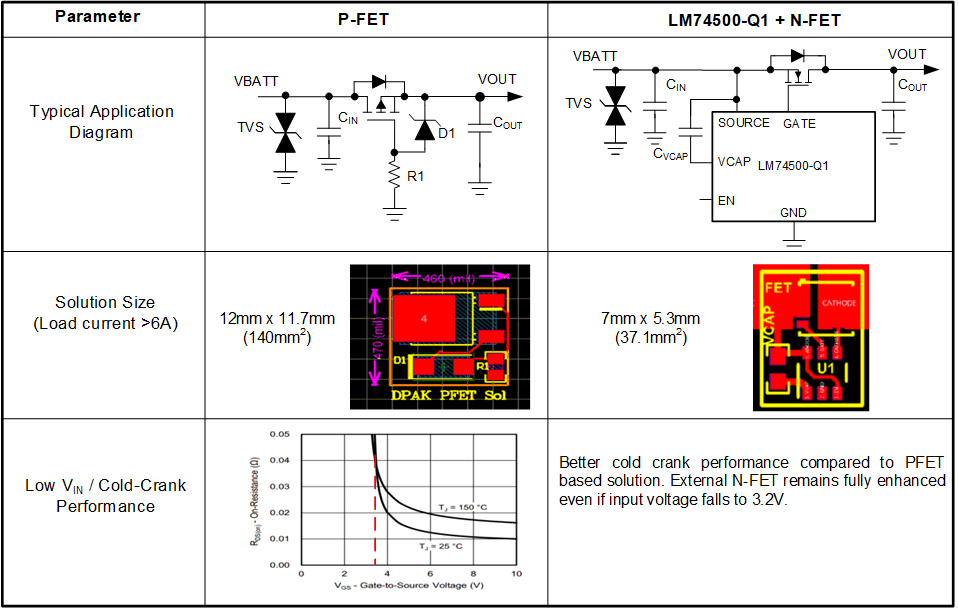SNOSDB7 December 2020 LM74500-Q1
PRODUCTION DATA
- 1 Features
- 2 Applications
- 3 Description
- 4 Revision History
- 5 Pin Configuration and Functions
- 6 Specifications
- 7 Typical Characteristics
- 8 Detailed Description
-
9 Application and Implementation
- 9.1 Reverse Battery Protection for Automotive Body Control Module Applications
- 9.2 Reverse Polarity Protection
- 9.3 Application Information
- 10Power Supply Recommendations
- 11Layout
- 12Device and Documentation Support
- 13Mechanical, Packaging, and Orderable Information
9.2 Reverse Polarity Protection
P-FET based reverse polarity protection is a very commonly used scheme in industrial and automotive applications to achieve low insertion loss protection solution. A low loss reverse polarity protection solution can be realised using LM74500-Q1 with an external N-FET to replace P-FET based solution. LM74500-Q1 based reverse polarity protection solution offers better cold crank performance (low VIN operation) and smaller solution size compared to P-FET based solution. Figure 9-3 compares the performance benefits of LM74500-Q1 +N-FET over traditional P-FET based reverse polarity protection solution. As shown in Figure 9-3, for a given power level LM74500-Q1+N-FET solution can be three times smaller than a similar power rated P-FET solution. Also as P-FET is self biased by simply pulling it's gate pin low and thus P-FET shows poorer cold crank performance (low VIN operation) compared to LM74500-Q1. During severe cold crank where battery voltage falls below 4 V, P-FET series resistance increase drastically as shown in Figure 9-3. This leads to higher voltage drop across the P-FET. Also with higher gate to source threshold (VT) this can sometimes lead to system reset due to turning off of the P-FET. On the other side LM74500-Q1 has excellent severe cold crank performance. LM74500-Q1 keeps external FET completely enhanced even when input voltage falls to 3.2 V during severe cold crank operation.
 Figure 9-3 Performance Comparison of P-FET and LM74500-Q1 Based Reverse Polarity
Protection Solution.
Figure 9-3 Performance Comparison of P-FET and LM74500-Q1 Based Reverse Polarity
Protection Solution.